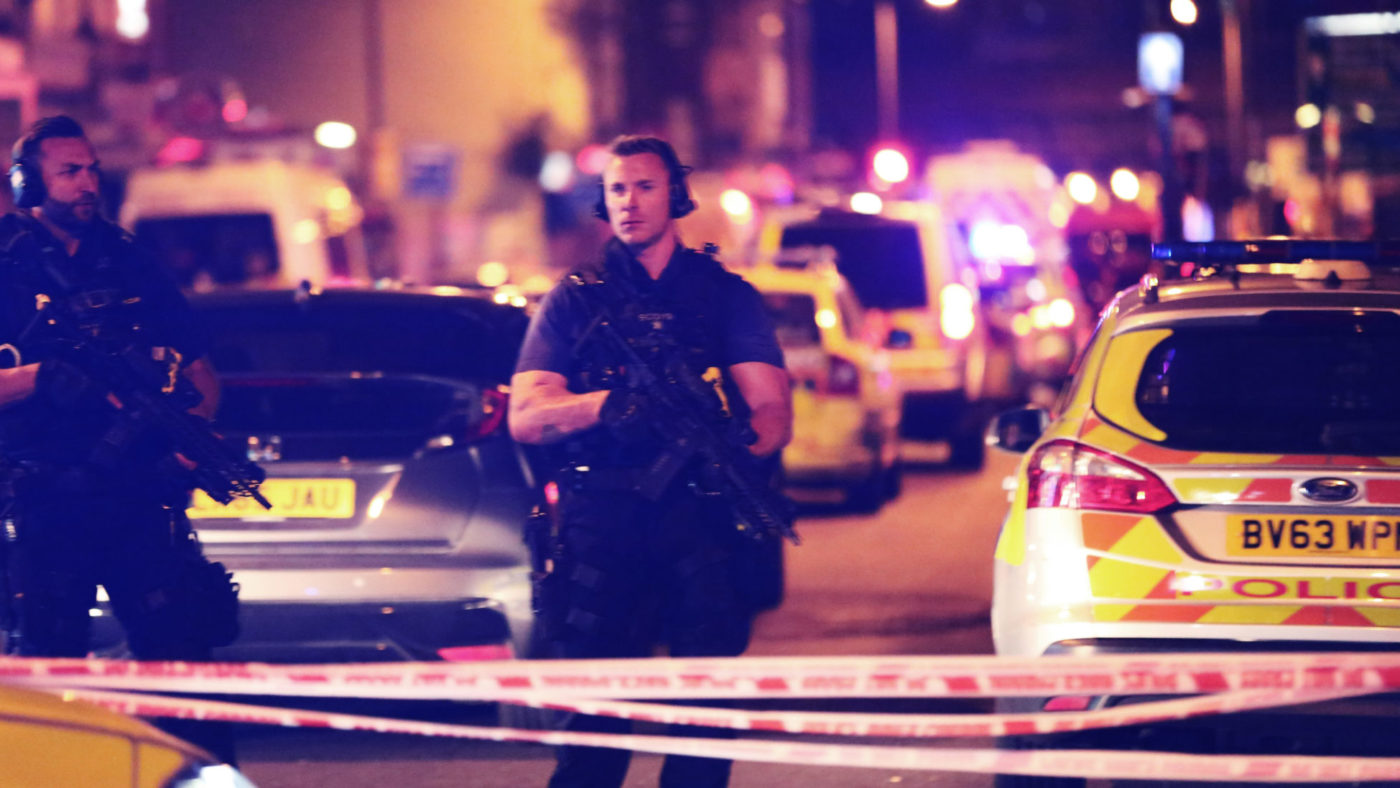From Westminster Bridge to La Rambla in Barcelona and from the Champs-Élysées to Manchester Arena, last year was a bloody and horrible one as Europe suffered at the hands of terrorists. As the war against Islamic State in Syria reaches its endgame and hate preachers encourage homegrown extremists to carry out further attacks, the threat from Islamist violence remains high.
It’s critical that we understand the nature of terror and where the threat is coming from. Which is why Europol’s new report on the nature of terrorist attacks is misleading and dangerous.
Of course, claims about terror – even dry statistics – will always be controversial. Europol has to decide what counts as terrorism, and there is no internationally agreed definition.
But we should always try to ensure that the facts aren’t misrepresented or politicised. Sadly, that’s exactly what Europol has left itself open to. Because according to them, the majority of terror attacks in 2017 weren’t carried out by Islamists – but by separatist groups like those we see in Northern Ireland.
If these figures are to be believed, just 16% of completed, failed or foiled attacks last year were carried out by jihadists – but 67% related to separatists. For people who witnessed the horrors of Westminster Bridge, Parsons Green, London Bridge or Manchester Arena, this will come as something of a surprise.
Policymakers might also look at this data and the headlines about rising separatist terrorism and wonder if they should prepare for a radical rethink on counter-terrorism. But what is particularly worrying about figures like these is that they can be seized upon by people who want to deny the serious threat posed by Islamist terrorism. Extremist groups and campaigners are all too willing to use questionable stats to make the case that there is no serious threat from jihadists.
An Islamist-linked group in the UK has, in the past, used Europol figures to put out literature claiming that only 2% of terrorist attacks in Europe were religiously motivated. Those figures are then exploited to stoke grievance among Muslims, encouraging them to believe that any focus on Islamist terrorism is really just an attempt to target their community.
So why are the Europol stats so misleading?
A lot of the problem comes down to definition. According to the report, a third of all attacks or attempted attacks in Europe last year are supposed to have happened in Northern Ireland. Many people will question whether incidents such as politically-motivated vandalism of property or street violence should be classed as terrorism.
Such incidents become common in areas affected by sectarian strife. But they are clearly very different acts to those of an Islamist suicide bomber, or the assailant who tried to kill multiple people by ploughing a van into worshippers outside Finsbury Park mosque.
Separatist groups in places like Northern Ireland or Corsica often become entangled with organised crime and gang turf wars, much of it violent. This often ends up being recorded as terrorism. But it is questionable whether these incidents really belong in the same category as the larger attacks commonly recognised as terrorism.
Of course, none of this is to downplay the seriousness of the terrible acts of violence and murder in Northern Ireland in recent years. But problems arise when you try to categorise what is happening.
For example, a terrorism database might count the Manchester Arena suicide bombing as just one incident. But a series of many minor arson attacks by separatists, or anarchists throwing Molotov cocktails, might be registered as 20 or 30 separate attacks. In this way the stats can risk becoming dangerously misleading.
A more accurate way of recording terrorism might be to instead focus on attacks where assailants attempt to cause direct and severe harm to people. As the Europol report itself says, jihadist terrorism causes more deaths and injuries than any other type. Recording terrorism in this way could tell us more about the greatest threats.
Not only would this help correct Europol’s distorted figures on separatist and Islamist terrorism, it could do the same with terror from the Far Left and the Far Right. The common view is that terrorism from the Far Right is on the rise – but according to Europol, Far Right terrorism is just 3% of the total, while the Far Left is responsible for 12%.
If Europol had instead focused on casualty figures and attacks that caused injuries, they would have seen the reverse: that in Western countries in 2017, the Far Right was responsible for killing and injuring far more people than the Far Left. This would have provided a very different insight into the threats we actually face.
Terrorism is an emotive issue and the data is always going to be subject to fierce debate. But if we are to beat terrorism, it is essential that we have the right data. Unfortunately, Europol’s figures are woefully misleading.


